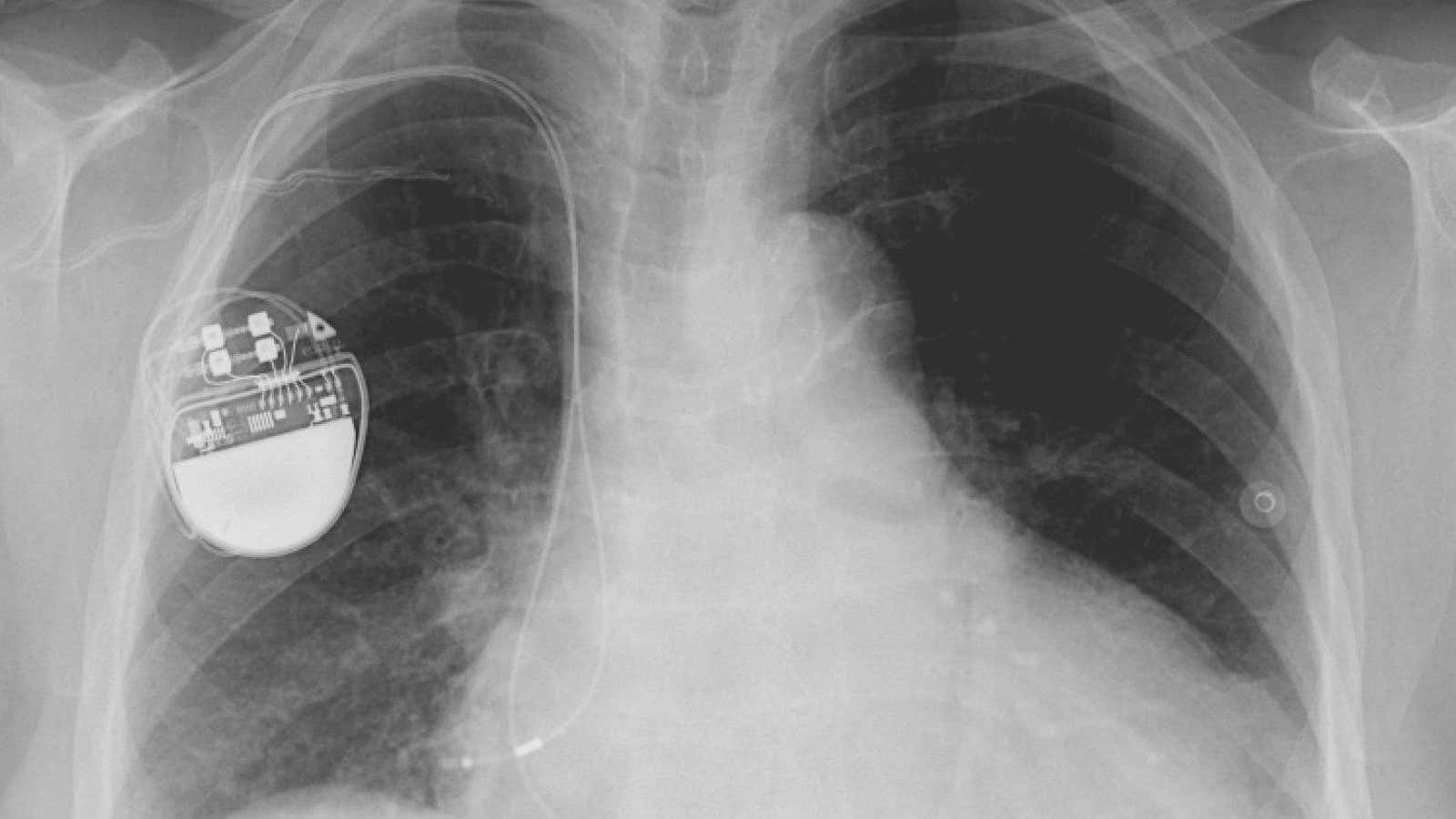Light packs a powerful punch. If we could harvest a fraction of the photons striking our bodies each day, we could be cyborgs with medical devices powered by the sun. The concept took a step forward this week as Swiss researchers, publishing in the Annals of Biomedical Engineering on Jan. 3, showed postage-stamp size panels implanted under the skin could theoretically generate enough electricity to run pacemakers and similar devices that now require bulky batteries.
The six-month study gave 32 volunteers in Switzerland an arm-strapped box covered with filters simulating human skin containing solar panels, batteries, and electronics. The participants wore the device for one week in the summer, autumn, and winter while going about their daily routines. The power generated on average was multiple times the 5-10 microwatts required by a standard cardiac pacemaker used to regulate irregular heart rhythms. Researchers say the lowest power recorded during the trial was 12 microwatts.
The Swiss team claims the study is the first to generate real-life data on how typical human movement patterns could gather enough light-derived power for devices such as pacemakers. Previous studies had simulated how such devices could work beneath flaps of pig skin (which has similar optical properties as human skin), showing a few minutes of direct sunlight exposure was enough to charge a pacemaker for a whole day.
In the new study, sunlight and artificial light energized the panels, with considerable power generated even indoors and during cloudy days. But it’s still a proof of concept. While not much larger than a credit card, the device was still too large and unwieldy to be implanted in the neck (where the panels would absorb the most light). The next step is to design and test a device that includes smaller, flexible solar panels optimized for low-light conditions, and with the right materials to safely encase the electronics that would go under a person’s skin. Finally, an effective solar-powered medical device would need to include a slim battery to store power for periods when light is in short supply.
But if these problems are solved, say the researchers, we could soon see a big improvement over today’s pacemakers that rely on batteries and need to either be regularly recharged (wirelessly) or, more often, replaced through surgery.
The image above was taken by Lucien Monfils and shared under a Creative Commons Attribution-Share Alike 3.0 Unported, 2.5 Generic, 2.0 Generic and 1.0 Generic license on Flickr.
